Hartlaub's Spurfowl
Posted: Mon May 21, 2012 7:16 pm
197. Hartlaub's Spurfowl (formerly known as Hartlaub's Francolin) Pternistis hartlaubi (Klipfisant)
Order: Galliformes. Family: Phasianidae
Description
Length: Male 28 cm; female 25 cm. A small, squat bird; both sexes of this species have disproportionately large bills for their size (in comparison to other Spurfowl species). The bare parts are mostly a dull yellow; the large bill is a brownish yellow.
Male: Strong contrast of mottled buff/brown upperparts and white underparts streaked with brown. Black forehead with white eyebrow conspicuous. Black-and-white barred undertail coverts especially diagnostic in flight. The males only have rudimentary spurs.
Female: Like male, but with cinnamon (not white) unstreaked underparts, grey-brown head and orange-brown eyebrow. Lacks undertail barring of male. Juvenile: Buffy forehead and brown crown tinged with rufous. Upperparts buffy grey with black and white vermiculations. Breast barred black and white, with buffy grey belly.
Distribution
Endemic to the escarpment zone of Namibia and Angola. Scattered populations can be found in central and northern Namibia and south-western Angola, in particular along the escarpment from Windhoek to the Kunene River and east to Grootfontein. They are absent from the open plains of Ovamboland.
Habitat
Found where there are rocky outcrops, or scattered boulders.
Diet
Mainly feeds on corns, bulbs, seeds and fruits by scraping them out with their large bills. They also eat insects, grubs and larvae, beetles and land molluscs.
Breeding
Monogamous. Nest a scrape in the ground lined with dry leaves. Usually 3 eggs are laid between April and August with an incubation period of 23 days. Chicks can fly short distances at 3 days. They are fully grown at 165 days.
Call
Pairs call in a squeaky duet at sunrise and sunset eeha-weeha, eeha-ideo, eeha-weeha, eeha-ideo. Listen to Bird Call.
Status
Fairly common, near endemic resident.
Order: Galliformes. Family: Phasianidae
Description
Length: Male 28 cm; female 25 cm. A small, squat bird; both sexes of this species have disproportionately large bills for their size (in comparison to other Spurfowl species). The bare parts are mostly a dull yellow; the large bill is a brownish yellow.
Male: Strong contrast of mottled buff/brown upperparts and white underparts streaked with brown. Black forehead with white eyebrow conspicuous. Black-and-white barred undertail coverts especially diagnostic in flight. The males only have rudimentary spurs.
Female: Like male, but with cinnamon (not white) unstreaked underparts, grey-brown head and orange-brown eyebrow. Lacks undertail barring of male. Juvenile: Buffy forehead and brown crown tinged with rufous. Upperparts buffy grey with black and white vermiculations. Breast barred black and white, with buffy grey belly.
Distribution
Endemic to the escarpment zone of Namibia and Angola. Scattered populations can be found in central and northern Namibia and south-western Angola, in particular along the escarpment from Windhoek to the Kunene River and east to Grootfontein. They are absent from the open plains of Ovamboland.
Habitat
Found where there are rocky outcrops, or scattered boulders.
Diet
Mainly feeds on corns, bulbs, seeds and fruits by scraping them out with their large bills. They also eat insects, grubs and larvae, beetles and land molluscs.
Breeding
Monogamous. Nest a scrape in the ground lined with dry leaves. Usually 3 eggs are laid between April and August with an incubation period of 23 days. Chicks can fly short distances at 3 days. They are fully grown at 165 days.
Call
Pairs call in a squeaky duet at sunrise and sunset eeha-weeha, eeha-ideo, eeha-weeha, eeha-ideo. Listen to Bird Call.
Status
Fairly common, near endemic resident.
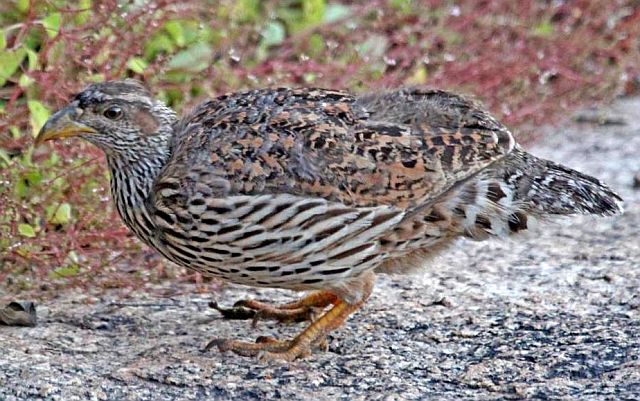
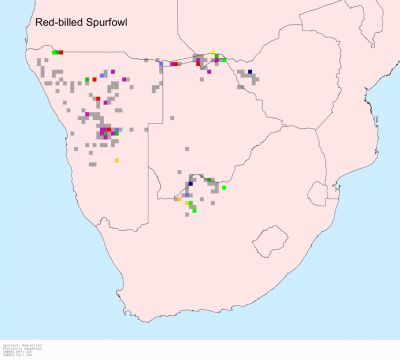
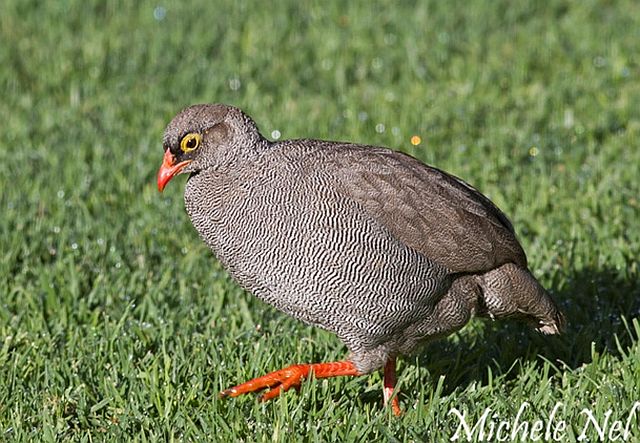
 © PRWIN
© PRWIN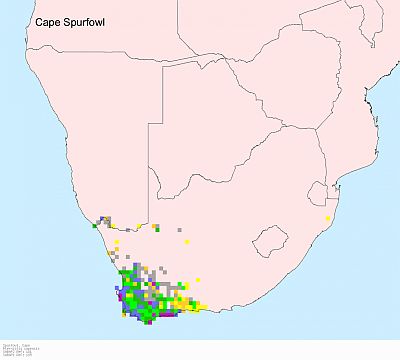
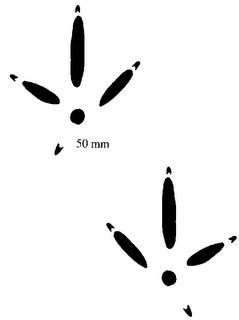


 © nan
© nan © Lisbeth
© Lisbeth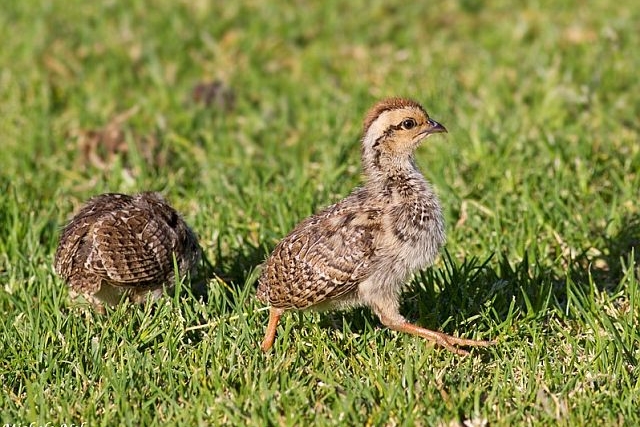 © Michele Nel
© Michele Nel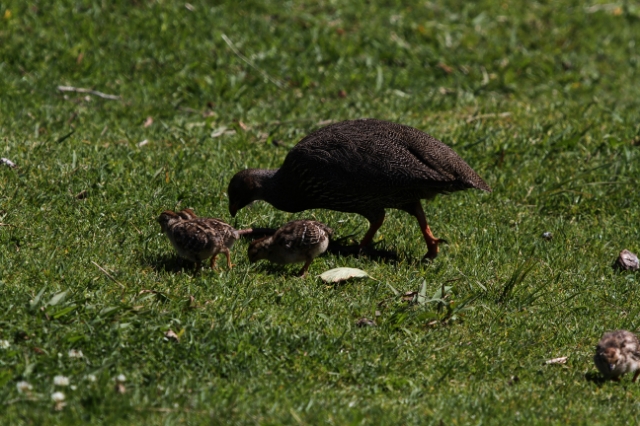 © Tina
© Tina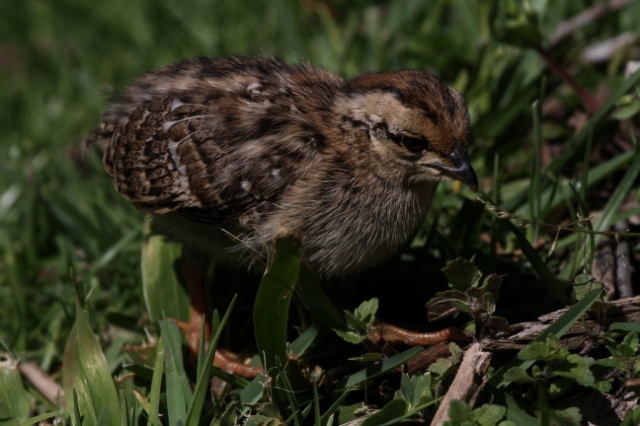 © Tina
© Tina
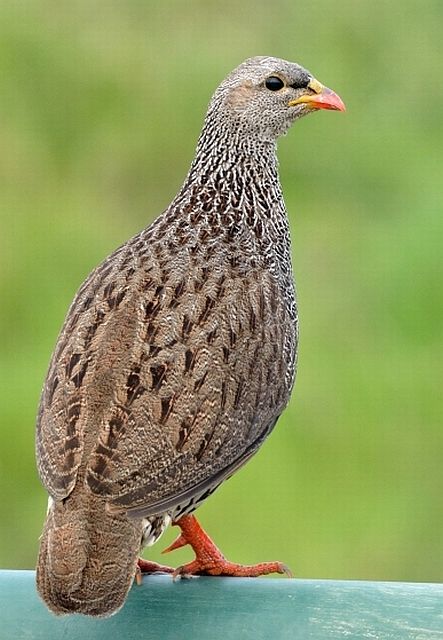 © BluTuna
© BluTuna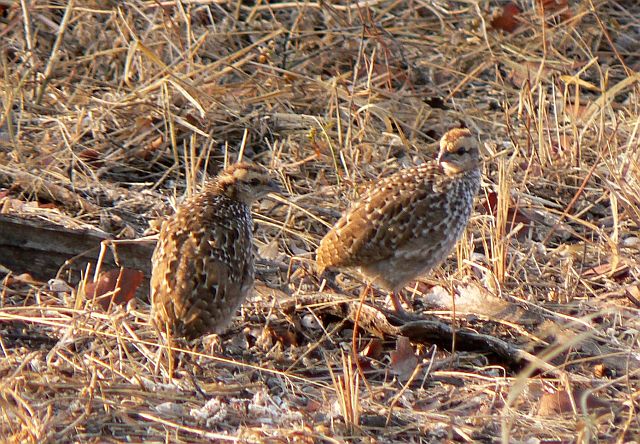 © Toko
© Toko © nan
© nan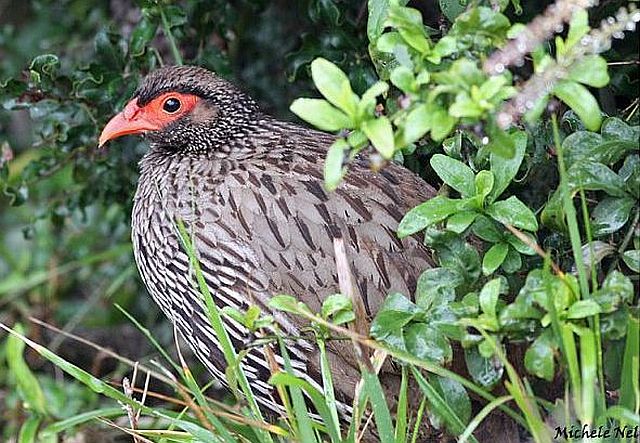
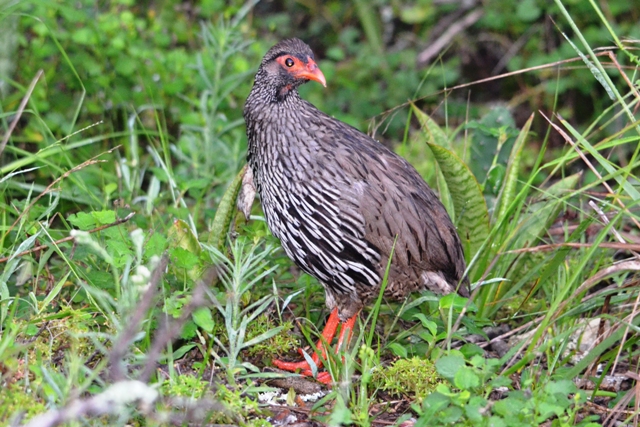 © Mel
© Mel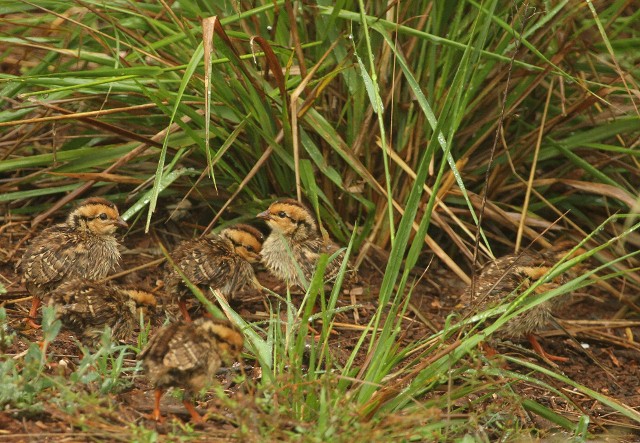 © nan
© nan